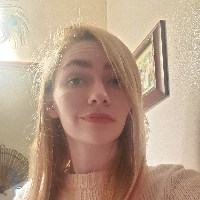"The Great North" Makes A Big Splash For Queer Representation
“The Great North,” a sparkling brand-new series from Fox animation, recently wrapped up its first season. It was created by Minty Lewis, (writer for “Regular Show” and “Close Enough,”) Wendy Molyneux, and Lizzie Molyneux-Logelin (writers for “Bob’s Burgers.”) They, along with Loren Bouchard are executive producers. Fans will notice a similar writing approach, art style, and character design as “Bob’s Burgers.” However, the show has been able to differentiate itself in important ways.
One major difference beyond the Tobin family living in rural Alaska is the ages of the characters. With two older teens and one adult brother who’s living with a fiancée, there are automatically different storylines the Belcher kids were just too young to cover.
There’s also the matter of the absent mother who abandons her family to move far away. This left some emotional baggage for the now-single-father Beef and his four children. The entire first season is full of clever episodes, and heartwarming moments as they navigate staying close as a family, but also finding their own room to grow as individuals. It’s also a genuinely funny comedy with a great voice cast including Nick Offerman, Jenny Slate, Will Forte, and Dulcé Sloan.
One place “The Great North” really made its mark was “Pride & Prejudance Adventure.” This episode shows what television can do when queer storylines are handled tremendously well.
The episode follows sixteen-year-old Judy Tobin who is determined to ask her established-from-episode-one crush to a school dance. This isn’t just any school dance though, it’s the Thomas Wintersbone Memorial Ladies’ Choice Dance. Judy tells her plans to ask Crispin Cienfuegos, as well as the origin story of the tradition, to her imaginary friend Alanis Morissette… who appears in the Aurora Borealis as would totally make sense for the show.
Back in the 19th century, with a single-room schoolhouse and harsher living conditions, schoolteacher Thomas Wintersbone wanted to marry groundskeeper, Ruby Wrench. The plan was to live in two separate cabins because as the saying goes “their love couldn’t be contained by just one cabin.”
Ruby’s father objected, finding Thomas to have too much of an “indoor disposition” to be a good provider, and gave him a test to survive a month in the Alaskan wilderness. Thomas "died in a blizzard almost immediately.” Ruby never married and instead spent the rest of her life in one cabin with her best friend Anne.
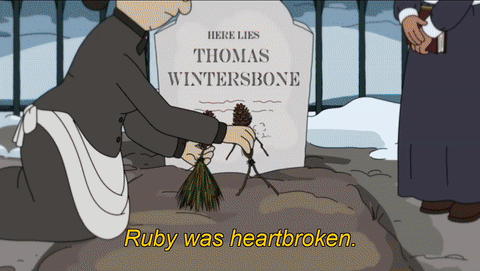
"The Great North” writer Charlie Kelly did an interview for the Gayest Episode Ever podcast and said, “I think for a lot of people, and especially queer people when they watch the episode, they know from the very first flashback where Judy’s describing the myth of Thomas and Ruby to Alanis that Thomas and Ruby were gay. It’s pretty much there for us to know.”
The town rewriting this history led to the tradition of a girls’ choice dance with any boy who isn’t invited having to stand outside for an hour “in homage to Thomas.”
Before going further into the episode, it’s worth noting just how Ham was established as a gay character, and how his “coming out” was very much not an issue.
In the first episode, Beef is angry about the family “drifting apart” after Judy gets a job at the mall, and at the height of tension even more secrets are revealed. Ham chooses this moment to pile on by saying, “Also… I am gay.” Younger brother Moon speaks for everybody by saying, “Ham, we know. You’ve come out to us a bunch of times.” Beef then says, comedically still in the tone from the argument, “And we love you just the way you are, damn it.”
It's not a plot device. It's one line. It's a piece of his already fleshed-out character. It sounds simple, but as writer Charlie Kelly told Pride.com, "a lot of TV treats queerness in characters as a source of drama or emotional tension, and it's really exciting to work on something where that's just not the case."
In the next scene of “Pride & Prejudance Adventure,” the Tobins talk about the dance at the breakfast table and Honeybee asks her brother-in-law-to-be, “Any special guys caught your eyes?” Ham’s answer is no, and here we establish that even though he wouldn’t have minded waiting outside with the “left-behinds,” he’ll be invited in by his cousin Becca who’s in town.
Judy and her crush Crispin work at the town mall. Judy asks him to the dance at the end of her shift when Ham is there to pick her up. Crispin actually brings up the dance first to ask if Ham is going after it’s clear to the audience he and Ham share a romantic spark.
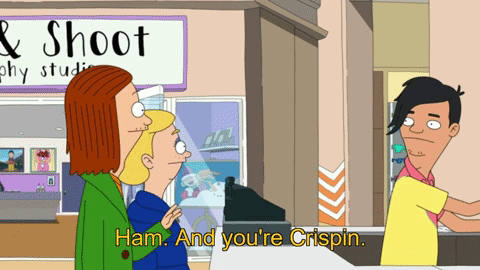
When Judy officially asks him, Crispin establishes that Ham will go with Cousin Becca, and he can go with Judy, but he and Ham will really be going together.
Judy does not pick up on this however and is thrilled that her crush is going to the dance as her date.
The next few scenes are comical and endearing, as Judy treats Crispin as a date would… all the while he and Ham are clearly flirting.
The audience can see what Judy can’t, and while she’s wrong, she’s not in the wrong. Ham and Crispin are also not annoyed by her being there but are just too captivated by each other to really pay attention to her.
This carries on until the dance when ultimately Crispin fakes needing a bathroom break to get Judy to leave him alone with Ham on the dancefloor. Ham and Crispin then share a super sweet first kiss. Judy sees this, however, and her innocent delusion is shattered.
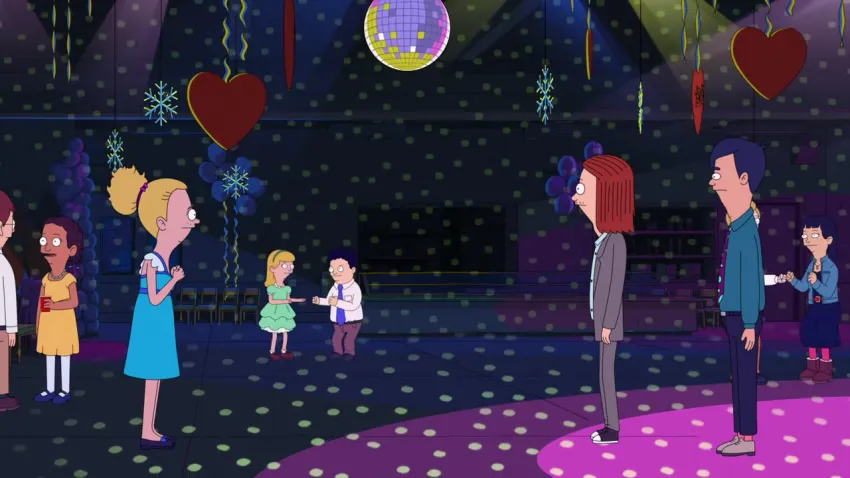
Judy is never mad at her brother for being with Crispin and is rather just upset when things don’t turn out to be how she thought.
Out in the hallway, Judy has a conversation with a poster of Thomas Wintersbone, and he tells her the true story behind the dance. He and Ruby were never in love. They were both gay and decided to marry each other to avoid persecution. Poster Thomas explains to Judy that rewriting the truth was not unlike what she was doing to Ham and Crispin, who deserve a proper love story.
It’s not definitive one way or another whether it is all Judy’s imagination and she comes to a new understanding all on her own, or if she is truly visited by a spirit who could properly explain things.
"I was a lesbian for men."
— LezWatch.TV ???? ????️???? (@lezwatchtv) March 17, 2021
The last episode of #TheGreatNorth had a very sweet mlm story and we learned the truth about the town's most famous Teacher. pic.twitter.com/7AHSLGu46u
According to the Charlie Kelly interview on the Gayest Episode Ever podcast, it’s “a way to kind of verbalize and activate this realization that she’s having inside herself, and that the people in this town should have had a very long time ago. I think that’s probably where some of the comedy of him being like, ‘girl wake up’ comes from. It’s very obvious that that’s the truth of this town myth.”
Judy then pulls the fire alarm to get everyone outside. She announces to everyone the true story of the dance, and how the tradition shouldn’t stand when there was never really a love story, only two people who couldn’t be themselves.
Side note: Why is pulling a fire alarm under false pretenses such a casual thing in media? In real life, it’s actually a HUGE deal.
Anyway, Judy uninvites Crispin so Ham can properly be his date instead. We end with everyone happily dancing together in the gym.
This is such a genuinely well-done episode, and only gets better the more you think about it. Within the categories of the show, it can be filed away under "sibling-relationship episode." Yet, this is also a “special episode” of a sitcom, even if it doesn’t feel that way… and that’s kind of the point.
It’s so nicely done in fact, it’s worth remembering what other “gay episodes” were like from the sitcoms that came before it.
Take, for instance, the 1997 episode of “The Simpsons,” “Homer’s Phobia.” The Simpsons meet John (played by John Waters) owner of a kitschy knickknack and collectibles shop in the Springfield Mall. Homer invites him to dinner and they dance to records. The family likes him for his unique taste and his pop culture knowledge. John finds the Simpsons charming from a "camp" viewpoint in how they truly conform to the American "2.3 kids" family model.
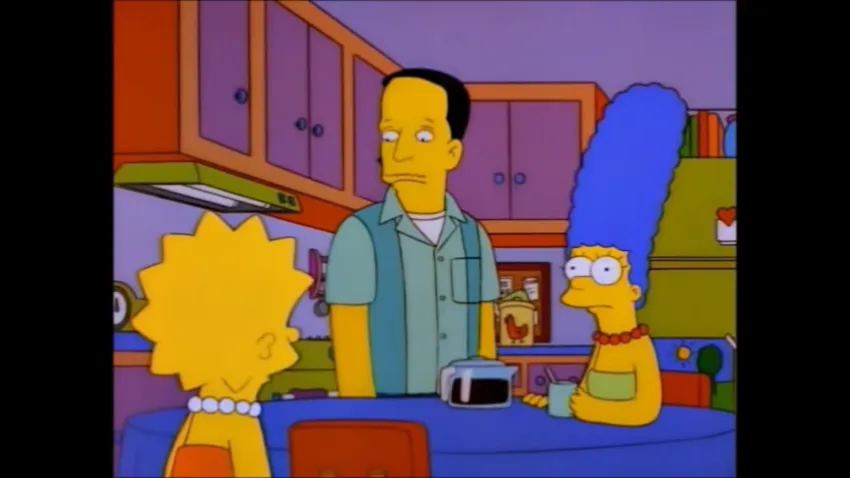
The following morning Homer tells Marge he wants to invite John and his wife over for drinks. Marge says she “doesn’t think he’s married,” and asks Homer, "Didn't John seemed a little... festive to you?” When Homer finally gets it, he’s horrified and panics at the thought of a gay man who danced with him. Homer claims his distrust isn't "because he's gay," but rather because he's a "sneak" who didn't "let everyone know that's he's... that way."
Later John comes over again to have coffee with Marge, and Homer notices Bart imitating him (dancing in a wig he brought.) This is sort of a “last straw” for Homer, and he confronts John to tell him he’s “taking back" his son.
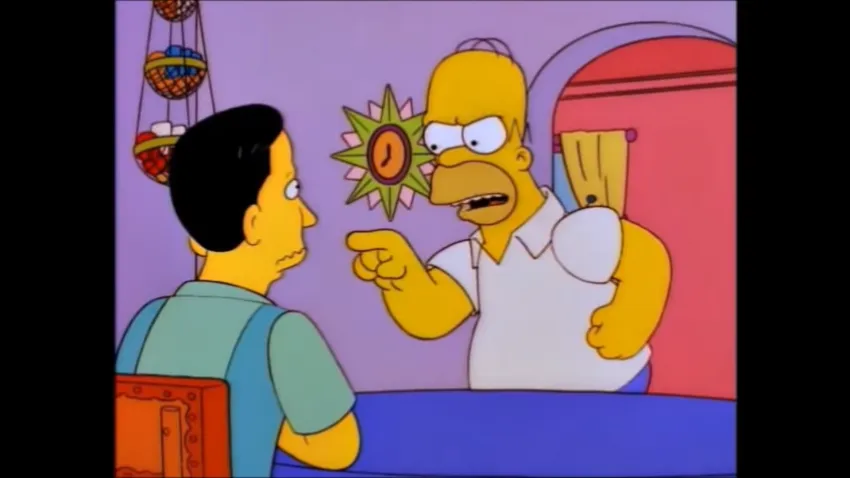
The rest of the episode is full of increasingly ludicrous ways to “set Bart straight,” after Homer fears the way John’s influence is affecting Bart. This comes from a desire to “protect” Bart, but Homer’s reactions are all drawn in such a way that no one would leave the episode thinking he’s acting rationally or modeling good behavior.
In the end, Homer comes around to respect John (but only after John saves his life,) and ultimately tells Bart, “Any way you choose to live your life is okay with me.”
John is a one-off character but is at least still a little fleshed-out for a one-time appearance. His being gay isn’t seen as negative, and isn’t played off as the punchline. The episode, airing in the late ’90s, came at a time when explicit LGBT representation was scarce and won a GLAAD Award and an Emmy.
As explained by Dr. Bryan Wuest, who has a Ph.D. from UCLA in cinema and media studies, as a guest on the Gayest Episode Ever podcast, Homer demonstrated a popular strategy used in sitcoms at the time, which was to “have a protagonist who’s the audience surrogate who has some discomfort with homosexuality and then comes around to it at the end, and it gives…people who aren’t quite sure where they stand with it an entry point.” It’s a roadmap for an emotional journey that the audience might get to have too.
There are even recent examples in television doing a less extreme version of this, such as in “This Is Us,” or “One Day at a Time,” where a mother of course accepts her gay daughter who recently came out, but later confesses to other characters, it’s still a bit of an adjustment.
Obviously, it’s important that there are episodes like this on television. They are still needed, and provide that same entry viewpoint to parents (or anyone for that matter) who want to be supportive, but need a little time to adjust.
“The Great North” did not make that episode, however. There was no “entry point,” no family member that really needed to be convinced of anything… just simply an outdated tradition, and a realization of who should really be whose date to the dance. The enemy here is subtle heteronormativity, and the rewriting of history to make a story more palatable.
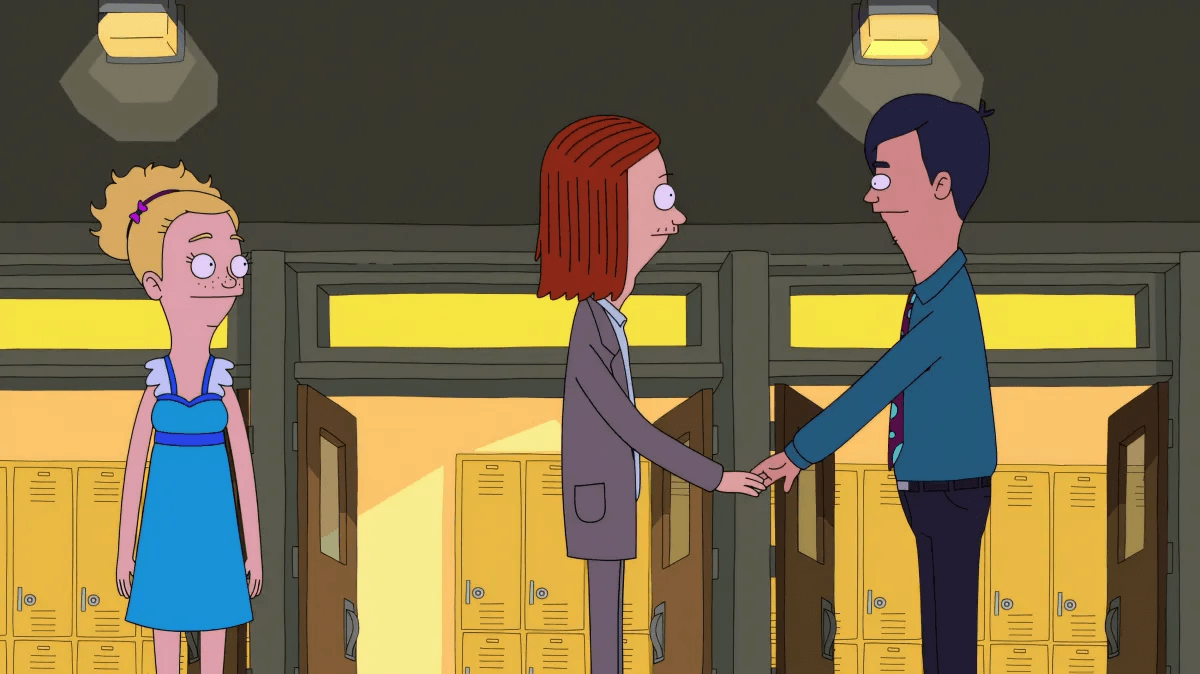
In short, "Pride & Prejudance Adventure" is a beautiful episode that reminds us that there are so many more LGBT stories out there to tell, especially from the main characters. It also shows that not every story has to come from either conquering homophobia head-on or from a world where homophobia doesn’t exist and never did exist. Both types of stories are important and need to be told, but it’s wonderful and remarkable we got to hear a story that is neither of these things.
Let’s hope for a future with more of these stories, and applaud “The Great North” for giving the world this one.
Opinions and Perspectives
The show has such a distinct personality while still feeling familiar.
Really appreciate how they don't make everything into a big dramatic moment.
This episode really raised the bar for LGBTQ+ representation in animation.
Love how they don't feel the need to explain every little detail about relationships.
The whole cast has such amazing chemistry. You can hear it in their voice work.
I was worried this would just be a Bob's Burgers clone, but it's really found its own voice.
Really appreciate how they don't make every episode about sexuality or identity politics.
The subtle background details in this show are amazing. I catch something new every rewatch.
Love how they're not afraid to tackle serious topics while keeping the show light and fun.
The animation quality has really improved since the first episode. Anyone else notice that?
The way they handle family dynamics is so real and relatable, even in such a unique setting.
Someone's got to mention that killer soundtrack. The music choices are always on point.
The show definitely benefits from having older teen characters. Opens up so many more storytelling possibilities.
I love how they handled the historical aspect without making it preachy. Really clever writing.
Jenny Slate brings such energy to Judy's character. Her voice work is outstanding.
That fire alarm scene was pretty unrealistic though. In real life that would have serious consequences.
The show runners really understand their audience. They know we don't need everything spelled out.
I'm curious about how they'll develop these relationships in future seasons. There's so much potential here.
The balance between humor and heart in this episode was perfect. Not easy to pull off.
Watching this with my teenager helped start some really important conversations. That's what good TV should do.
Can we talk about how amazing it is that Ham's sexuality isn't his only character trait? That's such rare writing.
The whole concept of the aurora borealis showing Alanis Morissette is just genius. Only this show could pull that off.
I had my doubts at first, but this show has really won me over. The writing is so sharp and thoughtful.
The Alaska setting gives the show such a unique flavor. It's not just another animated family sitcom.
Anyone else think Nick Offerman was perfect casting for Beef? His voice work really brings the character to life.
I can't get over how well they handled Judy's reaction. No drama, just genuine understanding and growth.
The way they incorporated the historical storyline with Thomas and Ruby was brilliant. Really added depth to the episode.
I disagree with some of the praise here. The show still feels like it's trying too hard to be progressive sometimes.
That scene where Ham and Crispin share their first kiss was so beautifully done. Made my heart melt!
The art style reminds me so much of Bob's Burgers, but I appreciate how they're creating their own unique identity with more mature themes.
I'm not entirely convinced. While the representation is good, I feel like they're still playing it pretty safe with these storylines.
The comparison to older shows like The Simpsons really highlights how far we've come in terms of LGBTQ+ representation on TV.
Actually watched this episode last night and was blown away by how naturally they handled the storyline. The writing team deserves major kudos.
I love how The Great North handles queer representation without making it the sole focus of the characters' identities. Ham's coming out scene was particularly refreshing.
